Used Full-Frame DSLR – Which Ones are Worth It?
Yesterday, while thinking about the upcoming wedding that I have to shoot, I glanced at my trusty old D700. The rubber is coming off in places and needs to be glued back on, nothing serious. Two of the batteries that I have need replacing. The plastic screen protector has a few minor scratches on it, but would you expect anything else? No. Those are just minor signs of careful use. In every single way, it’s a damn good camera. And then I wondered, would I recommend it to a beginner looking for an affordable entry into the full-frame world? Oh yes, definitely. And it’s not the only one. So if you are a beginner – either to DSLRs or digital photography – and want to potentially improve the quality of your family pictures, to, perhaps, photograph your son’s football games with more confidence or even start your own photography business, there are a lot of used, older cameras you could go for and not regret it. Let us glance through some of them.
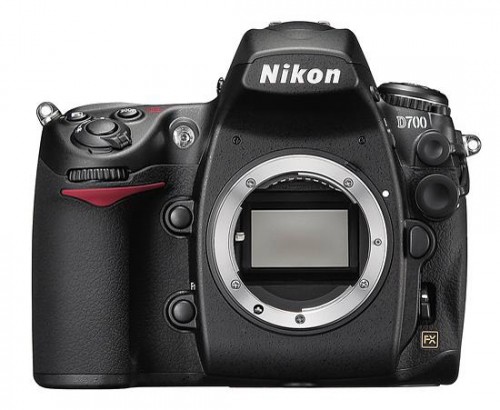
Here is something I thought I should not say, mainly because it may seem strange or even unprofessional coming from someone writing articles at a photography website. I never expected or even understood the release of Nikon D610, the Canon 700D (also known as T5i) model, Sony NEX-3N and some other cameras I do not care to mention. Now, in no way does that mean I think them to be bad cameras, far from it. The D610 is arguably the most capable model in Nikon’s current range for the money, whilst the 700D offers features that only several years ago would not look out of place in a much more expensive camera. No, no, they are all good cameras, certainly. It’s just I never expected them to be announced quite so soon and bring quite so little. Not “little” in general, just little for a completely new model. Some time ago I even expressed an opinion that the ever more frequent release of new camera models into the market is a growing trend, it’s used almost like an advertisement to keep the manufacturer’s name fresh in our memories.
Be that as it may, the new cameras are here, they are undeniably better than their predecessors (even if only in one or two areas) and are spurring interest everywhere you look. Truth is, however, not everyone needs, wants or is able to afford the “latest and greatest”, and the good thing is about new cameras being released so soon is how the used market flourishes with great cameras for low prices. And so when done with care, purchasing a used camera is very much a viable option, and you know what? There are plenty of choices, too.
In this article I will talk about a few full-frame cameras from different manufacturers that I’ve personally had some experience with and could recommend to a beginner on a budget looking for his first full-frame DSLR. Mind you, I have not done any deliberate testing or comparisons, you will not find ISO and dynamic tests here – merely a few suggestions worth taking a look, with notes.
1) Canon EOS 5D
When it comes to affordable full-frame DSLR cameras, this is the trend starter and a camera many professionals gladly admit to having owned. Released back in 2005, it is definitely the oldest model in this list, but that also potentially makes it the most affordable full-frame model that’s still worth looking at. We never reviewed it, but I did have experience working in a studio with it, and my impressions, despite the camera’s age, were positive with a few caveats. Before we get to them, though, let’s overview the specs quickly. At the heart of the original 5D is a 12.8 megapixel 35mm sensor. It has an ISO range of 100-1600 that’s expandable to 50-3200, shutter speed range of 30s-1/8000, maximum frame rate of 3 per second and a 9-point AF system. At the back of the camera there is a tiny-by-today’s-standards 2.5″ screen with 230k dots.
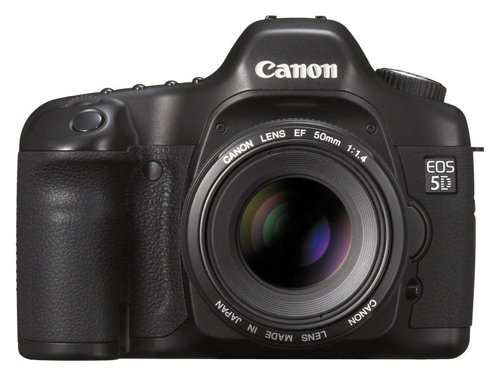
Having said all this, there are also several weaknesses that you may need to be aware of before deciding if this is the camera for you. First of all, it has never been known for its brilliant AF system, mainly because, well… it wasn’t brilliant. The 5D also does not hold a candle to a Nikon D4s when it comes to low-light environments. Add the 3 frames per second shooting rate and this is clearly not a camera for sports photography. The back screen is also not really usable for serious image sorting, but then that holds true with any camera (at least, it should not be used for that purpose). And finally, there is a good chance that such a camera will have seen quite a bit of action, so finding one in pristine condition may take a little bit of time.
Other than that, and I say this truthfully, if I was starting a wedding photography business today with a low budget and was looking at Canon as my tool of choice, the original Canon EOS 5D would be at the top of my list. Coupled to a 35mm or 50mm lens, it’s also what I’d purchase if I had no interest in working as a photographer, but wanted an affordable full-frame camera for personal work and family photography.
2) Canon EOS 5D Mark II
If you just read my thoughts on the original 5D and decided it was what you need, don’t read any further. You will most likely change your mind as bigger numbers tend to do that to a lot of people. And when the highly anticipated 5D Mark II was released, that’s what people noticed first – big numbers. It was quite a step-up from its predecessor in many, although not all, key areas. First of all, the 21 megapixel sensor meant much higher resolution output, but the ISO performance did not seem to suffer. On the contrary, it beat not only the older model, but also the rivaling Sony cameras by a large margin. The screen at the back of the camera would not look out of place on a modern DSLR, it’s really good and sharp. The build quality was improved with better weather sealing, faster frame rate of 3.9 per second was available due to a much newer processor and, of course, there was the high-quality video option which still makes the 5D Mark II the camera of choice for a lot of videographers.
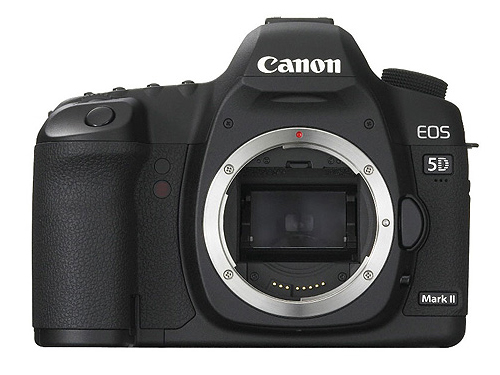
3) Nikon D700
A DSLR that hardly needs an introduction, the D700 has achieved almost a legendary status and is considered by many photographers, myself included, to be the best digital SLR Nikon has ever made. The reason for this is not immediately apparent – it did not photograph a million frames per second, nor did it have an unsurpassed sensor in terms of resolution. The reason why it was so successful and liked among many is because of the way all the components came together. Everything was just right. You could not blame the sensor – it performed admirably in any light and had good resolution. You could not blame the size or weight, especially not when compared to the one camera above in terms of price, the D3. It had what was considered to be the best AF system of the time, Nikon’s wonderful 51-point. Add a good viewfinder, great screen at the back, tons of external controls and impressive build quality, and everything is suddenly clear. The D700, at least in my hand, feels that much more rugged that the 5D or 5D Mark II, even if the actual comfort is subjective (I find larger Canon DSLRs to be very comfortable).
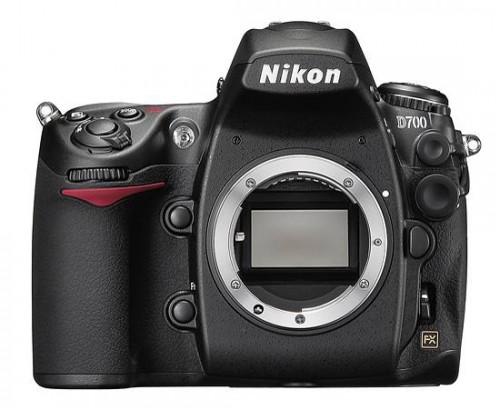
But really, that’s about it. Much like the original Canon 5D, this camera is digital photography at its purest. More importantly, within the context of this article, the Nikon D700 is probably among the best cameras you could buy be it for occasional family photography, personal work or, say, for starting a wedding or portrait photography business.
4) Sony Alpha A850/A900
Of all the high-end cameras that I’ve had the chance to use, I spent the least amount of time with the Sony A850. That said, during my brief time with this tool, I was left very impressed. Not sure if modern Sony full-frame cameras (the SLT-A99) would leave me with as good an impression, but when I first picked up the A850 I remember thinking it was the toughest camera I’ve ever held in my hand. It felt as if, literally, if you dropped it on a tiled floor, the floor would get the worst of it. It was also very purposeful-feeling, like a tool to be used and not a fancy accessory. The best thing is that such a subjective feeling was backed up by the camera’s solid specifications. Mind you, much like the original Canon 5D and Nikon D700, the Sony A850 focused on photography only, so a lot of current “standard” features, such as WiFi connectivity and video, were not yet available. As a photographic tool, though, Sony A850 is very impressive.
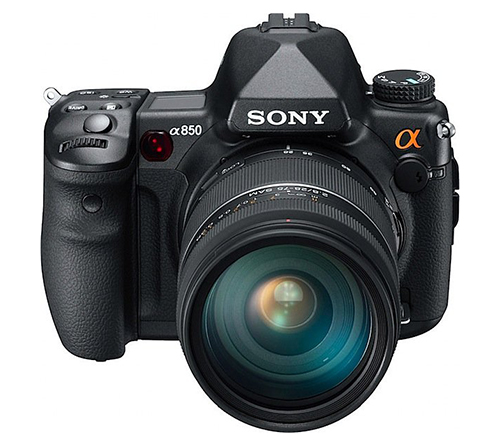
You may have noticed I did not say much about the A900 and the reason is simple – it’s basically the same camera save for three differences. Firstly, it could do 5 frames per second instead of “just” 3 (remember, that’s a 24 megapixel camera). Secondly, it had an ever so slightly better OVF coverage (100%). Thirdly, it was much more expensive when introduced at $3000. Although… that’s a normal price for such a segment, isn’t it? Well, yes. Only, the A850 cost just $2000.
So the price is Sony A850′s biggest party piece. However, not everything is great with either model. Sony has always been good at making sensors, but Nikon managed to improve them on their own models even more a few years ago. Although ISO range went all the way up to 3200, those sensitivities weren’t all that usable. I tried. The grain is quite prominent and oh-so-ugly. Also, the AF system is nowhere near Nikon D700 and perhaps closer to that of the 5D Mark II. Unfortunately, I did not spend enough time with the camera to know for sure, but the general opinion that I’ve heard from other photographers is pretty much the same. Finally, being one of the older Sony models, both A850 and A900 use Sony’s proprietary flash hot shoe, different from the standard one used by all the other manufacturers.
Having said all that, if you don’t photograph moving subjects much and prefer landscapes or portraits, or plan to print big, this is one of the best “old” full-frame cameras. Just make sure you always have the time to double-check AF accuracy, don’t shoot sports and rarely use high ISO’s.
5) Summary
We could not possibly hope to have enough time to review older camera models, especially with so many new ones coming out. But the truth is, a lot of “old” models are still very much worth the attention, especially considering how much less expensive they are than their newer siblings. In this article, I shared my personal experience about older full-frame cameras that I’ve used at least a little and found to be great. If you were looking at older models or even thinking if it’s worth it, I hope this article was of some use to you. In the end, remember this – the best camera is not just the one you have with you, but also that one that feels right in your hand, so make sure to try them out if at all possible before purchase. Also, I would strongly recommend reading our article on buying used DSLR cameras before you make your purchase so as to avoid any unpleasant surprises. Just as important is to remember a camera is only part of a system, so before you make up your mind be sure you are satisfied with the lens selection.



.gif)





